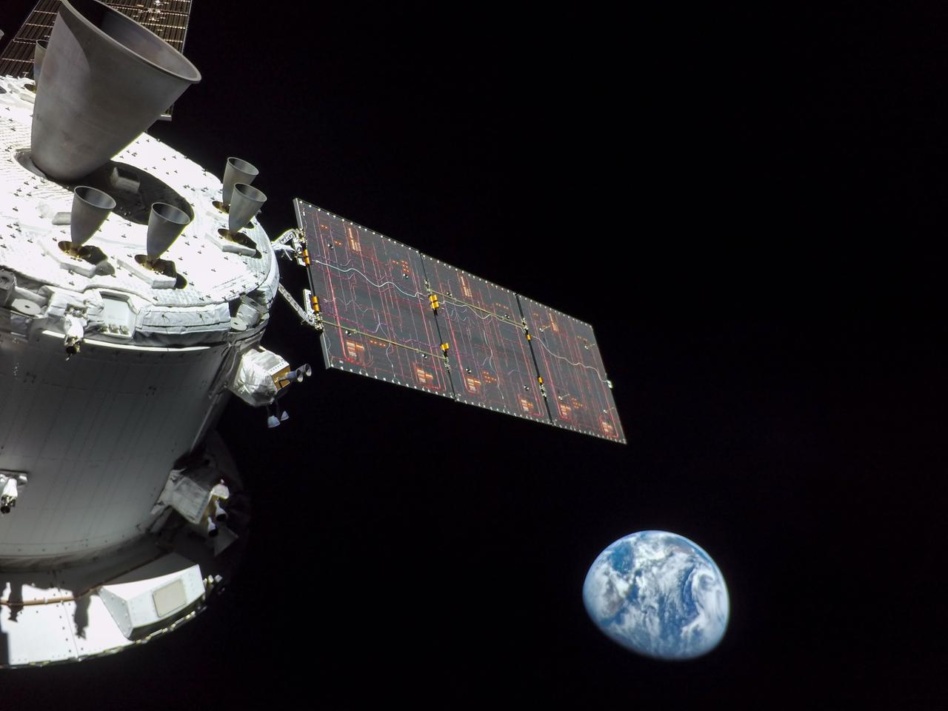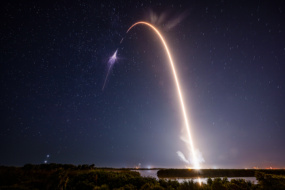Can you believe 2022 is nearly over? It’s been a jam-packed year for the space industry, full of groundbreaking moments in science, turbulence in the markets and world order; substantive policy developments; and historic mission firsts.
We’re kicking off our year-end coverage by looking at objects closest in the rear-view mirror. Payload combed through the 53 newsletters we sent and 104 articles we published so far in Q4 to bring you the goods.
October
Firefly got the quarter started on a high note, reaching orbit for the first time with its Alpha rocket on the first day of October. Also on the launch front, a complete second stage of the Ariane 6 rocket successfully completed a hot fire test. Skyrora had less luck and failed on its first attempt to launch the Skylark L suborbital vehicle.
AE Industrial Partners announced in October that it planned to acquire a majority stake in York Satellite Systems, valuing the satellite bus manufacturer at $1.125B. SatixFy completed its SPAC merger and entered the public markets under the ticker $SATX.
In a stride forward for in-orbit servicing, the US Space Force ordered a GEO satellite refueling mission from Orbit Fab.
Payload’s funding coverage: Solestial, a solar energy startup, raised a $10M seed round. Orbex closed a £40.4M ($46.3M) Series C to scale up development of its Prime rocket. Apex Space emerged from stealth with the announcement of its a16z-led $7.5M seed. Array Labs brought in a $5M seed round to kickstart development of its radar constellation.
November
Congress said farewell to several key space advocates in the US midterms, but fresh faces are waiting in the wings. “I am encouraged that we will continue to have leaders in Congress to sustain a strong US space program,” outgoing Rep. Eddie Bernice Johnson told Payload. Elsewhere in policyland, the FCC announced that it would create a space bureau to handle satellite licensing. Later in the month, the White House released its first national strategy for cislunar science and technology.
The X37-B spaceplane returned to Earth after 908 days in orbit. In the South China Sea, China seized a piece of space debris from a Long March launch that had been recovered by the Filipino navy.
On Nov. 16, NASA finally launched Artemis I, successfully deploying the Orion capsule on its trajectory around the Moon and beginning its campaign to send humanity back to the lunar surface. And, while we’re here…the White House dropped its first report on US cislunar S&T strategy.
In Europe, ESA announced its newest class of astronaut candidates and the agency came away from its ministerial council meeting with a 17% funding boost for the next three years.
Payload’s funding coverage: Wyvern secured $7M to develop telescopic hyperspectral satellites; Gravitics emerged from stealth with a $20M round to work on the StarMax module; Rosotics raised a $750,000 pre-seed to build really large 3D printers; and SynMax closed a $6M seed round to built verticalized satellite data analytics solutions for the O&G sector.
December
The Pentagon took aim at the “valley of death” for deep-tech startups by creating the Office of Strategic Capital. Lawmakers ushered the 2023 NDAA through rounds of revision and left it on the President’s desk (the bill is expected to be signed this week). In the executive branch, the FCC expressed its intent to streamline the satellite licensing approval process.
Orion splashed down in the Pacific Ocean after 25 days, bringing Artemis I to a triumphant close.
Maxar ($MAXR) and Aerojet Rocketdyne ($AJRD) each agreed to $6.4B and $4.7B mergers, respectively.
Payload’s funding coverage: Slingshot raised a $40M Series A-2; Dawn snagged NZ$20M (~$13M); and Quantum Space bagged $15M from Prime Movers Lab.




